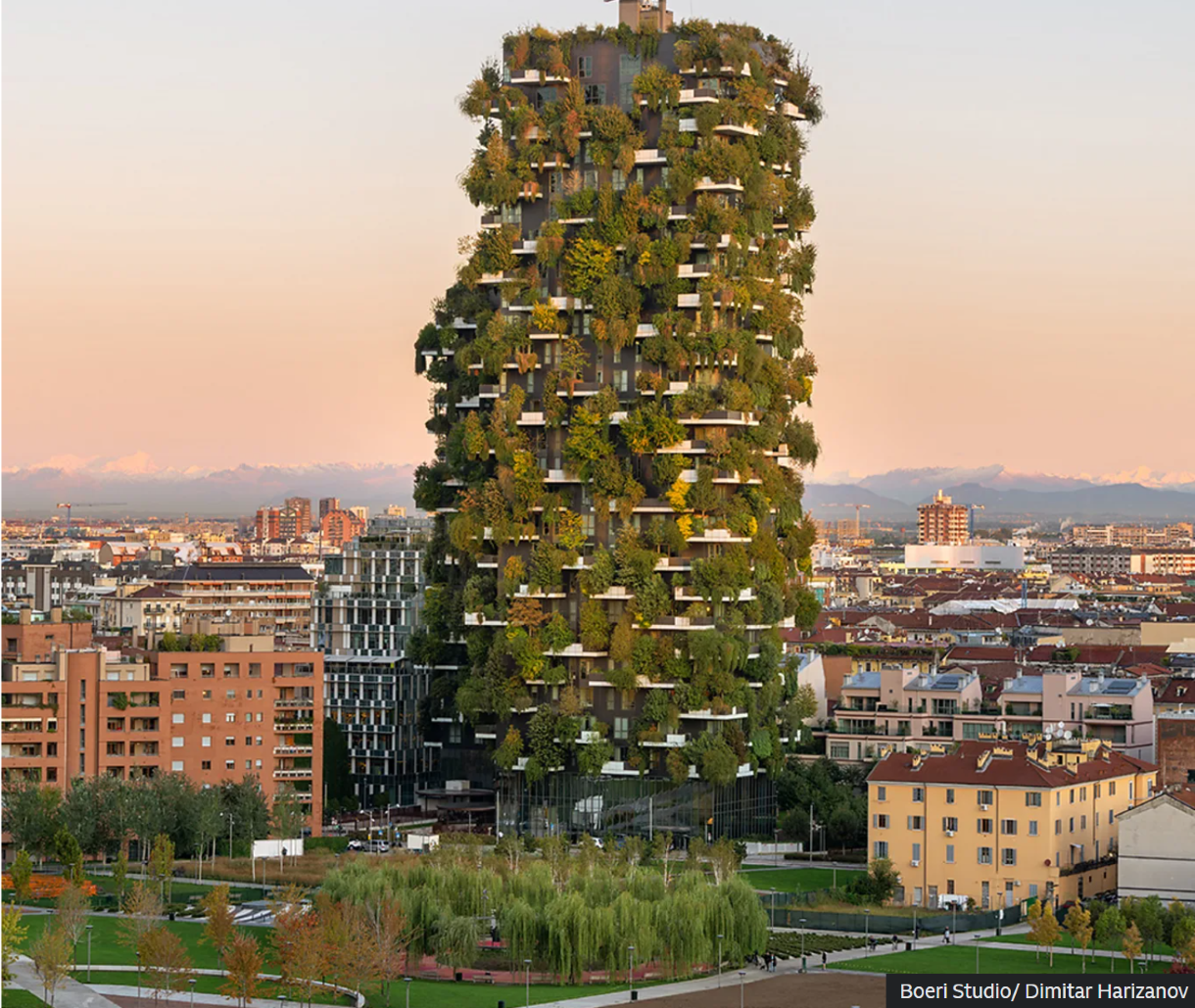A home for trees and birds, and also humans
How high-rise forests can transform city life – and make us happier

This article explores how "vertical forests"—high-rise buildings covered in plants and trees are transforming urban living by blending architecture with nature. It focuses on the legacy of Milan’s Bosco Verticale, designed by Italian architect Stefano Boeri, which sparked a global movement of biophilic architecture that integrates greenery into buildings to improve air quality, reduce urban heat, and boost mental well-being. The article highlights various global examples, from social housing in Eindhoven to luxury towers in Taipei and green hospitals in Belgium, demonstrating how these nature-infused designs promote sustainability, community, and happiness. Research is cited showing that access to green spaces can reduce anxiety, enhance recovery in hospitals, and improve work satisfaction. These buildings are not just beautiful, they are also climate solutions, absorbing CO₂, reducing energy use, and reconnecting people with nature. Ultimately, the vertical forest is portrayed not just as an architectural innovation, but as a political and ecological statement about the future of urban living.
Abstract based on original source.


Comments